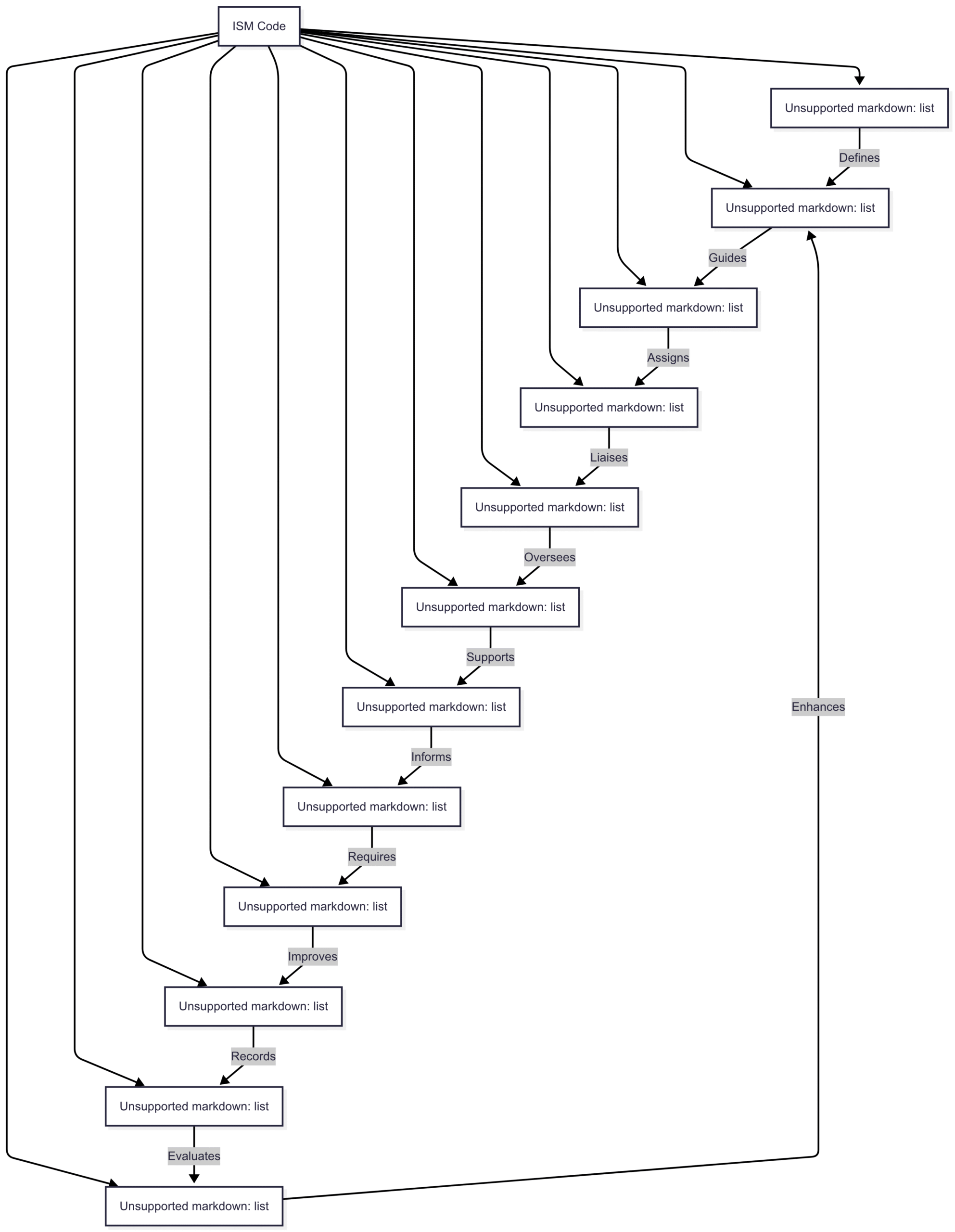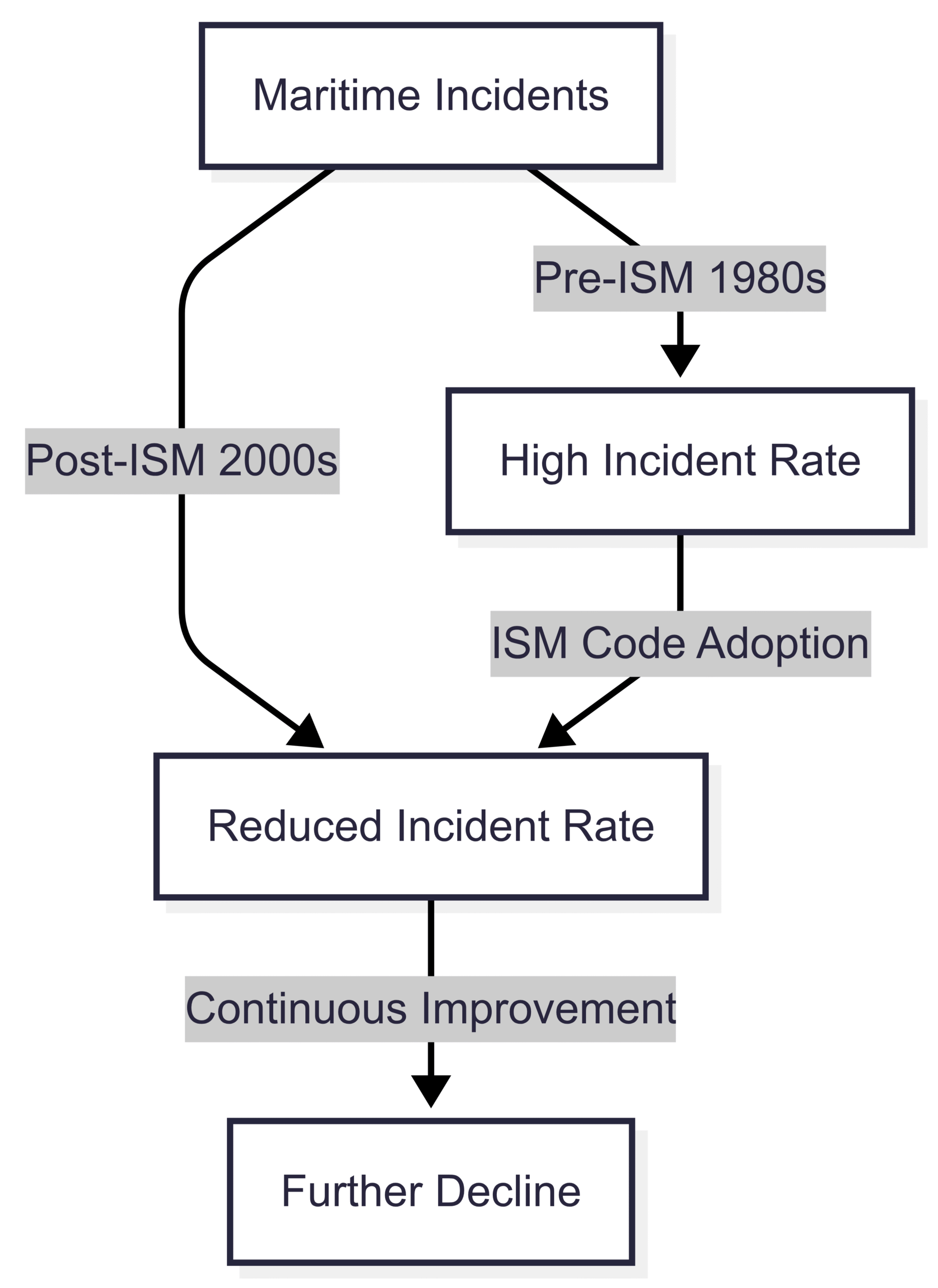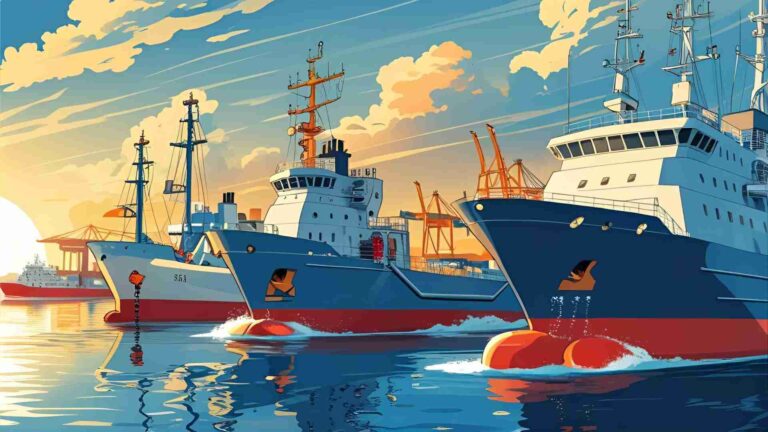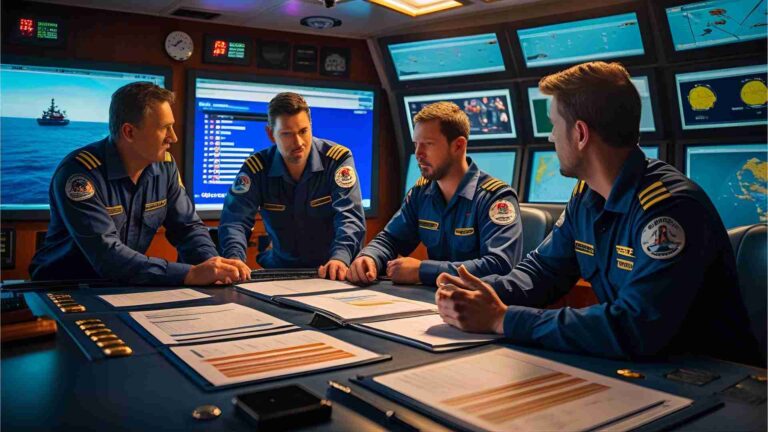The International Safety Management (ISM) Code
Learn about the ISM Code, its objectives, and how it ensures safety and environmental protection in maritime operations.
The maritime industry is a cornerstone of global trade, transporting over 80% of the world’s goods by volume. However, its operations come with significant risks to human life, property, and the marine environment. The International Safety Management (ISM) Code, developed by the International Maritime Organization (IMO), addresses these challenges by providing a comprehensive framework for safe ship operations and pollution prevention. Enacted as a mandatory regulation under the International Convention for the Safety of Life at Sea (SOLAS) Chapter IX, the ISM Code has transformed maritime safety by fostering a culture of accountability, preparedness, and continuous improvement. This article explores the ISM Code in depth, covering its origins, objectives, implementation, and impact on the global shipping industry.
Origins and Evolution of the ISM Code
The ISM Code emerged from a pressing need to address systemic failures in maritime safety. The late 1980s saw a series of catastrophic maritime incidents, most notably the Herald of Free Enterprise disaster in 1987. This tragedy, where a roll-on/roll-off (Ro-Ro) ferry capsized off the Belgian port of Zeebrugge, claimed 193 lives due to an open bow door and organizational negligence. The public inquiry revealed a “disease of sloppiness” within the operating company, highlighting the need for standardized safety management practices. In response, the IMO adopted the ISM Code in 1993 through resolution A.741(18), making it mandatory with the 1994 SOLAS amendments effective from July 1, 1998.
The ISM Code has evolved through several amendments to address emerging challenges and incorporate technological advancements:
- 2000 Amendments (MSC.104(73)): Enhanced requirements for company responsibilities and emergency preparedness, effective July 1, 2002.
- 2004 Amendments (MSC.179(79)): Strengthened documentation and verification processes, effective July 1, 2006.
- 2005 Amendments (MSC.195(80)): Improved guidelines for internal audits, effective January 1, 2009.
- 2008 Amendments (MSC.273(85)): Addressed crew training and competency, effective July 1, 2010.
- 2013 Amendments (MSC.353(92)): Integrated cyber risk management, effective January 1, 2015.
These updates ensure the ISM Code remains relevant in a dynamic industry, addressing issues like cybersecurity (MSC-FAL.1/Circ.3) and near-miss reporting (MSC-MEPC.7/Circ.7).
What is the ISM Code?
The ISM Code is an international standard that mandates the implementation of a Safety Management System (SMS) for ships engaged in international voyages. It applies to a wide range of vessels, including cargo ships, container ships, passenger ships, oil tankers, chemical tankers, gas carriers, bulk carriers, and offshore structures over 500 gross tonnage (GT). The code’s primary aim is to ensure safety at sea, prevent human injury or loss of life, and protect the marine environment from pollution.
The SMS is a structured and documented system that enables shipping companies to manage risks systematically. It encompasses policies, procedures, and practices that address all aspects of ship operations, from routine maintenance to emergency response. The cornerstone of the ISM Code is the commitment from top management, emphasizing that safety and environmental protection depend on the competence, attitude, and motivation of personnel at all levels.
Key Objectives of the ISM Code
The ISM Code is built around a set of clear objectives designed to enhance safety and sustainability in maritime operations:
- Safety at Sea: Ensuring ships operate safely under all conditions.
- Prevention of Human Injury or Loss of Life: Protecting seafarers, passengers, and shore-based personnel.
- Environmental Protection: Preventing pollution, particularly to the marine environment.
- Property Protection: Minimizing damage to ships and cargo.
- Standardized Safety Management: Establishing consistent safety protocols across the industry.
- Continuous Improvement: Encouraging ongoing evaluation and enhancement of safety practices.
- Emergency Preparedness: Ensuring readiness for incidents like fires, collisions, or oil spills.
- Competency Development: Providing training to ensure personnel are qualified and informed.
These objectives align with the broader goals of international conventions like SOLAS and MARPOL, integrating them into a cohesive safety framework.
Who Does the ISM Code Apply To?
The ISM Code applies to a broad spectrum of stakeholders in the maritime industry, each with specific roles and responsibilities:
- Shipowners and Operators: Responsible for developing and implementing the SMS for their vessels.
- Management Companies: Entities providing crewing or operational management must ensure compliance with the ISM Code.
- Shipboard Personnel: Crew, officers, and maintenance staff must adhere to the SMS procedures.
- Flag States: Responsible for issuing and verifying compliance documents like the Document of Compliance (DOC) and Safety Management Certificate (SMC).
- Shore-Based Personnel: Ship agents, surveyors, and service providers must align their operations with the SMS.
- Port State Control (PSC): Authorities inspect foreign ships to ensure compliance with the ISM Code.
- Classification Societies: Verify compliance during surveys and certifications.
This multi-layered approach ensures accountability across the maritime ecosystem, from the ship’s bridge to the company’s headquarters.
The 12 Elements of the ISM Code
The ISM Code is structured around 12 key elements that form the backbone of the SMS. These elements provide a comprehensive framework for managing safety and environmental risks:
- General: Defines the scope, objectives, and application of the ISM Code.
- Safety and Environmental Protection Policy: Outlines the company’s commitment to safety and pollution prevention.
- Company Responsibility and Authority: Assigns roles and responsibilities for SMS implementation.
- Designated Person Ashore (DPA): Appoints a liaison between ship and shore to ensure compliance.
- Master’s Responsibility and Authority: Grants the ship’s master ultimate authority for safety and pollution prevention.
- Resources and Personnel: Ensures adequate training and resources for SMS implementation.
- Shipboard Operations Plans: Develops procedures for safe operations and risk management.
- Emergency Preparedness: Establishes protocols for handling emergencies like fires or spills.
- Reports and Analysis: Mandates reporting and investigating incidents and near-misses.
- Maintenance of Ship and Equipment: Ensures regular inspections and maintenance.
- Documentation: Maintains up-to-date records and document control systems.
- Company Verification, Review, and Evaluation: Conducts audits and reviews to improve the SMS.
Chart: Structure of the ISM Code
Below is a visual representation of the ISM Code’s 12 elements and their interconnections, illustrating how they contribute to a cohesive SMS.

This chart highlights the cyclical nature of the SMS, where each element reinforces the others, fostering continuous improvement.
Implementation of the ISM Code
Implementing the ISM Code involves a structured process to ensure compliance and effectiveness:
- Development of the SMS: Companies create a Safety Management System Manual detailing policies, procedures, and responsibilities.
- Company Audit and DOC Issuance: The Flag State or Recognized Organization (RO) audits the company’s SMS. Upon approval, a Document of Compliance (DOC) is issued, valid for five years with annual verifications.
- Vessel Audit and SMC Issuance: Each vessel is audited to verify SMS implementation, leading to the issuance of a Safety Management Certificate (SMC), valid for five years with an intermediate audit between the second and third years.
- Continuous Monitoring: Companies conduct internal audits and management reviews to identify and address non-conformities.
- External Audits: Flag States or ROs perform periodic audits to ensure ongoing compliance.
Table: ISM Code Compliance Process
| Stage | Description | Responsibility | Outcome |
|---|---|---|---|
| SMS Development | Create a manual outlining safety policies and procedures. | Company | SMS Manual |
| Company Audit | Flag State/RO audits SMS for compliance. | Flag State/RO | Document of Compliance (DOC) |
| Vessel Audit | Verify SMS implementation on each vessel. | Flag State/RO | Safety Management Certificate (SMC) |
| Annual Verification | Annual audits to maintain DOC validity. | Company/Flag State | Continued DOC Validity |
| Intermediate SMC Audit | Audit between years 2-3 to verify vessel compliance. | Flag State/RO | Continued SMC Validity |
| Management Reviews | Internal reviews to improve SMS effectiveness. | Company | SMS Improvements |
Impact of the ISM Code
The ISM Code has significantly improved maritime safety and environmental protection. Key impacts include:
- Reduced Incidents: Standardized procedures have decreased accidents and near-misses.
- Enhanced Safety Culture: Commitment from top management has fostered accountability among crews.
- Environmental Protection: Procedures for spill prevention and waste management have minimized marine pollution.
- Global Standardization: The code ensures consistent safety practices across diverse fleets and flag states.
Chart: Maritime Incident Trends Post-ISM Code

This chart illustrates the decline in maritime incidents following the ISM Code’s implementation, with ongoing improvements driven by regular audits and updates.
Challenges and Future Directions
Despite its success, the ISM Code faces challenges:
- Compliance Costs: Developing and maintaining an SMS can be resource-intensive, particularly for smaller operators.
- Cybersecurity Risks: As ships adopt digital technologies, cyber risk management (MSC.428(98)) is increasingly critical.
- Human Factors: Ensuring consistent training and motivation across diverse crews remains a challenge.
Future amendments may focus on integrating advanced technologies like autonomous ships and enhancing cybersecurity protocols. The IMO continues to refine guidelines, such as those for the Designated Person Ashore (MSC-MEPC.7/Circ.6), to address evolving industry needs.
Frequently Asked Questions
- What is the ISM Code?
The ISM Code is an international standard for the safe management and operation of ships, aiming to ensure safety at sea and prevent pollution. - Who does it apply to?
It applies to shipowners, operators, management companies, shipboard personnel, flag states, and related shore-based entities. - What are its main objectives?
To ensure safety at sea, prevent human injury, protect the environment, and standardize safety management practices. - Is MARPOL part of the ISM Code?
The ISM Code integrates conventions like MARPOL and SOLAS, providing a unified framework for safety and environmental compliance. - What is the latest version of the ISM Code?
The 2018 Edition, adopted by resolution A.788(19), is the latest, incorporating amendments up to 2015.
Conclusion
The International Safety Management (ISM) Code is a pivotal regulation that has reshaped the maritime industry by prioritizing safety, environmental protection, and accountability. Through its structured Safety Management System, it ensures that ships operate safely, crews are well-trained, and the marine environment is protected. By fostering a culture of continuous improvement and standardizing safety practices globally, the ISM Code remains a cornerstone of modern maritime operations. As the industry evolves, the code’s adaptability will continue to drive safer and more sustainable shipping practices worldwide.
Happy Boating!
Share The International Safety Management (ISM) Code with your friends and leave a comment below with your thoughts.
Read Must-Know Skills for Marine Electrical Engineers on Ships until we meet in the next article.





